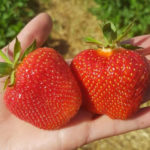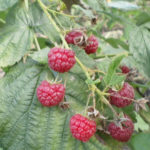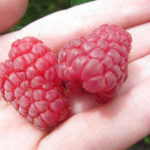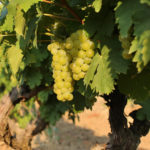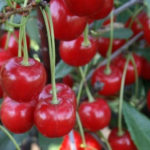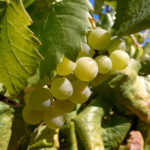Strawberry variety Borovitskaya
Borovitskaya is a variety of strawberries (garden strawberries) of medium late ripening, universal purpose. Bred by specialists of the All-Russian Institute of Selection and Technology of Horticulture and Nursery by crossing the varieties Nadezhda and Red Gauntlet. Since 1992, state tests of the "novelty" have begun, in 2003 it was included in the state register of breeding achievements of the Russian Federation. Approved for cultivation in the Volgo-Vyatka (Perm region, Kirov, Sverdlovsk, Nizhny Novgorod regions, the Republic of Mari El, Chuvash and Udmurt) and the Far East (Primorsky and Khabarovsk regions, Sakhalin, Magadan, Amur, Kamchatka regions) regions.

The plant is powerful, erect, abundantly leafy, up to 30 cm high. The leaves are large, rounded-rhombic, leathery, strongly wrinkled and strongly ribbed, with an intense green color. The leaf blade is funnel-shaped, with wide, slightly bent rounded denticles. The flowers of the variety are bisexual, very large, not twisted. The inflorescence is semi-sprawling, consists of many flowers. Strawberry flower stalks are long, erect, located above the level of the leaves.
Borovitskaya's berries are large, of the correct blunt-conical shape, often double and with a groove in the middle, without a neck. The skin is bright red, sometimes with an orange tint; at the stage of full maturity, the berries acquire a dark red color. The pulp is light red, without voids, dense, juicy, has a pronounced sweetish aroma. The taste of the variety is dessert, very rich, sweet and sour, tasting score - 4 points. The pulp contains: 7.2% sugar, 1.4% ascorbic acid, 69.8 mg% vitamin C. The fruits are universal in use, after harvest they remain dry and attractive, they tolerate transportation well. They are especially good fresh, but also great for various processing.

Fruiting of strawberries is long, but rather heterogeneous - at the first harvest, the berries are much larger than in subsequent ones. So, the average weight of fruits in the season is at the level of 15.4 grams, while the first specimens weigh on average about 30 grams, there are also "champions" with a weight of more than 80 grams. Various sources, including nurseries, characterize Borovitskaya as a high-yielding variety, but in numbers it is not so good - about 500 grams of berries per season can be harvested from one plant. This indicator can rather be called average, especially in comparison with some other popular varieties of medium late ripening. Fruiting begins around the end of July, in some regions a little later.
The variety has an average winter hardiness, it recovers well after freezing. In winters with little snow and in regions with very severe frosts, a good shelter is highly desirable. Plants are highly resistant to fungal diseases and strawberry mites, moderately resistant to gray rot. Also, strawberries have good drought resistance, in hot seasons they feel great, besides, the berries become sweeter. By the way, in a rainy summer, the taste of the fruit may not please - it will be a little bland, but not sour. It is also worth mentioning that the best taste of berries is manifested at the stage of their full ripeness, unripe ones may have excessive sourness.

In agricultural technology, Borovitskaya is quite simple, does not require much attention. Plants are planted in a pre-prepared and well-fertilized soil, the planting pattern is 30 × 70 cm.Then the seedlings only need standard care - regular watering, timely feeding, loosening the soil, weeding weeds, preventive treatment against pests and diseases. Strawberries do not require an increased amount of fertilizers, however, nutrition should be sufficient, it is optimal to carry out 2-3 feeding per season. Attention should be paid to removing excess mustache. The variety forms quite a lot of them, and most of the nutrition goes to their development, so it is extremely important to get rid of them in a timely manner.
Let's summarize all of the above.Borovitskaya fell in love with gardeners for her excellent taste, unpretentious care, good presentation of berries and their suitability for transportation. But our heroine also has significant drawbacks. First, in terms of yield, it lags far behind other varieties on the market. That is why it is not grown on an industrial scale, remaining only a resident of small household plots. Secondly, fruiting is rather unstable, the size and weight of the berries decrease by the end of the season. Thirdly, strawberries show the best taste only when fully ripe, at which they become too soft, as a result of which they are not suitable for transportation. Thus, it is worth saying that the variety is not bad for growing in a garden plot, but for commercial purposes it is better to choose another variety.
